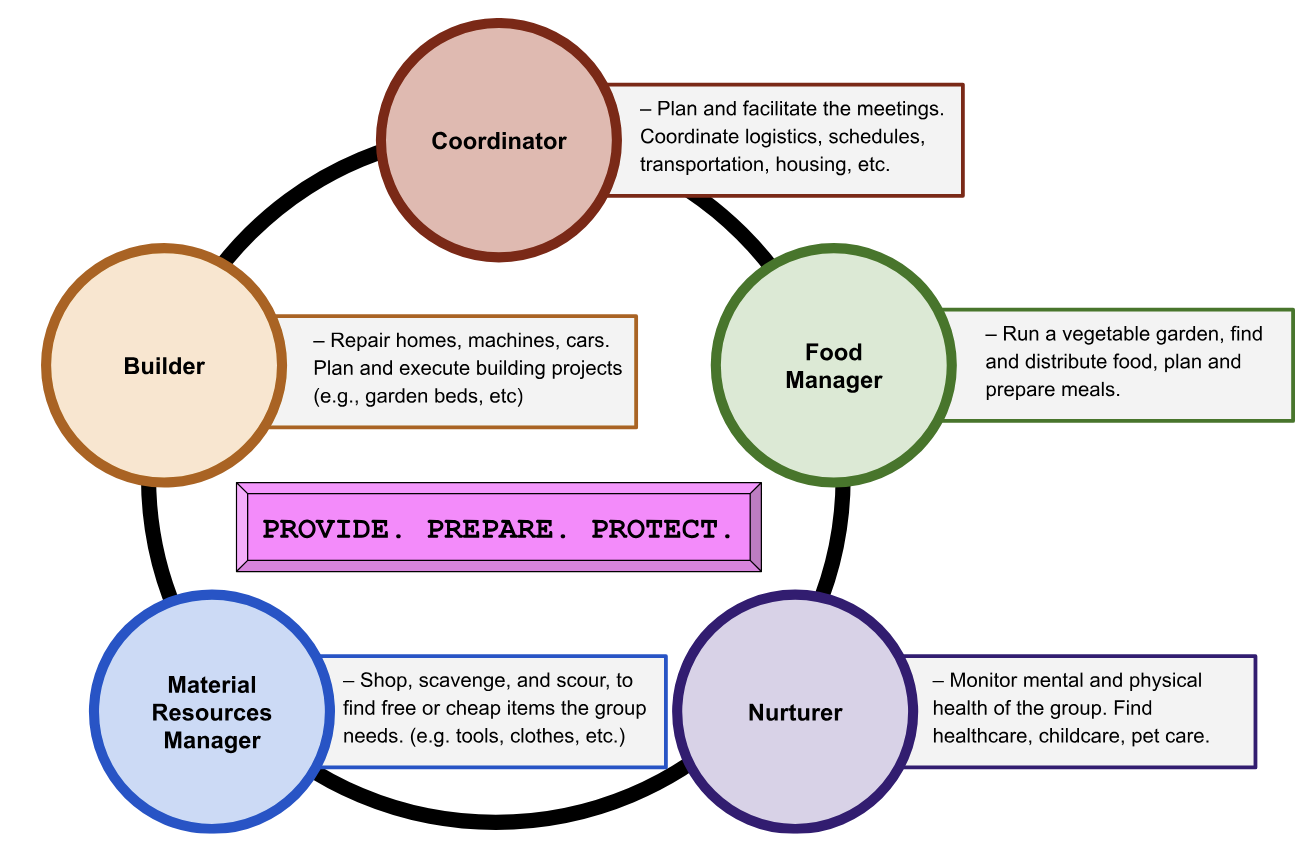Mission: Build local resilience and help neighbors thrive through unprecedented socio-economic challenges.
Step 1: Community Exchange
Start by joining the Community Exchange System (CES), a platform for digital currency (“time banking”), which can be traded instead of US dollars. This facilitates bartering, and provides a way to support each other when the jobs get cut. It's free, it's easy, and it helps you save a lot of money!
As people contribute to the RING network, they “bank” currency in the CES. This can be pulled from for basic needs if they lose their job or other income.
Once you join a CES, you can help build community and resilience by joining or organizing one-time events. For example: swap meets, repair cafes, musical events, BBQ's in the park... the list goes on!
Step 2: Neighborhood RINGs
If you have time, you are invited to join a neighborhood RING. Rings are small groups of people who live hear each other and look out for each other carefully, while also learning practical skills. Each neighborhood RING provides for themselves, prepares for the future, and protects each other. If there is a disaster, the RING checks in with each other to make sure everyone is OK. You do not have to join a Neighborhood RING to participate in the network; however, it's a great way to get to build deeper relationships with your neighbors, which you may need to call on in the future.
Each Neighborhood RING will have at least 5 people:
- Coordinator: Helps facilitate the meetings. Organizes logistics, scheduling, transportation, etc.
- Food Manager: Runs a garden, finds and distributes food, and plans and prepares meals.
- Builder: Repairs homes, machines, cars. Plans and executes building projects. (For example, garden beds, etc.)
- Material Resources Manager: Shops, scavenges, and scours, to find free or cheap items the group needs.
- Nurturer: Monitors the mental and phyiscal health of the group. Helps find childcare, healthcare, and pet care.
Do you need to be a specialist in one of the 5 areas to join a RING? No! The beauty of it is that you will learn as you go. Pick an area you are interested in, and we will provide resources to help you you learn about that topic throughout the year. Not only will you learn incredibly valuable skills, you will be "paid" (in timebank / CES hours) to do so! Win-win!
Each RING needs all five roles filled. More than one person can (and probably should) fill each role. But you need at least one person in each role. That said, everyone does a little of everything. Even though some people specialize in their knowledge, we all help with all the projects.

Every week the RING meets in someone’s home for a potluck meal. They begin with a structured set of questions and discussion points. After eating and cleaning up, everyone then works on projects together. Each weekly meeting should take about 2 hours. Members are "paid" for their time using the CES.
Step 3: Interlocking RINGs
The small neighborhood RINGs are powerful. However, some problems cannot be addressed at such a small scale, so we also need RING networks that cover districts, cities, and states. As more and more people join RINGs, regional connections will be formed.
City/District/State RINGs:
District / City / State RING networks provide the following services:
- Place interested newcomers into neighborhood RINGs.
- Offer community swap meets, concerts, repair events, workshops... and any other helpful / fun events that will support everyone in the network.
- Coordinate Neighborhood RINGs, if needed
- Keep materials on hand, to give to neighbors in need
- Run a lending library, for neighbors to pool resources and share supplies
- Run community gardens and farms
- Connect people with professional services, when access is otherwise impossible
- Run the CES (including transparent accounting)
The RING network is not yet large enough to have these services, but we are working towards it!
Ready to get started?
Getting started is easy! You can participate at any level you are comfortable with.
- Start by joining your state's CES. Make a few posts, trade some services, and see how it goes.
- Build community spirit by attending or hosting a one-time event! Contact your CES administrator if you have an idea for a fun community event. This could be a musical event, a game night, a repair cafe... there are tons of options!
- After a bit of time, you can attend a local meeting near you to see how the Neighborhood RINGs work. (Contact us to find one.)
- If you like the meeting format, feel free to join a Neighborhood RING. If it's not your cup of tea, that's fine. You can still help your neighbors by participating in the CES, and attending or hosting local events.
Still need more information?